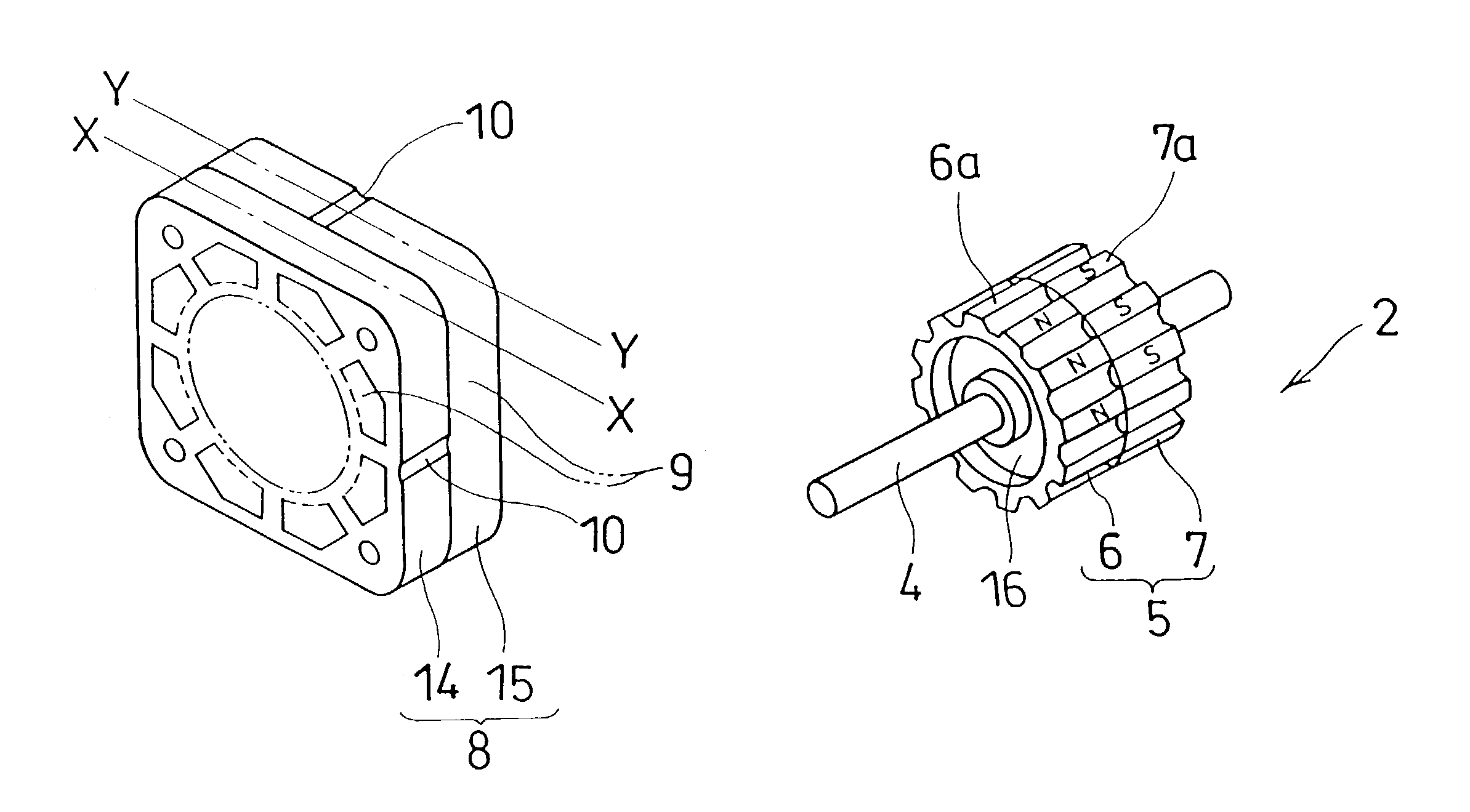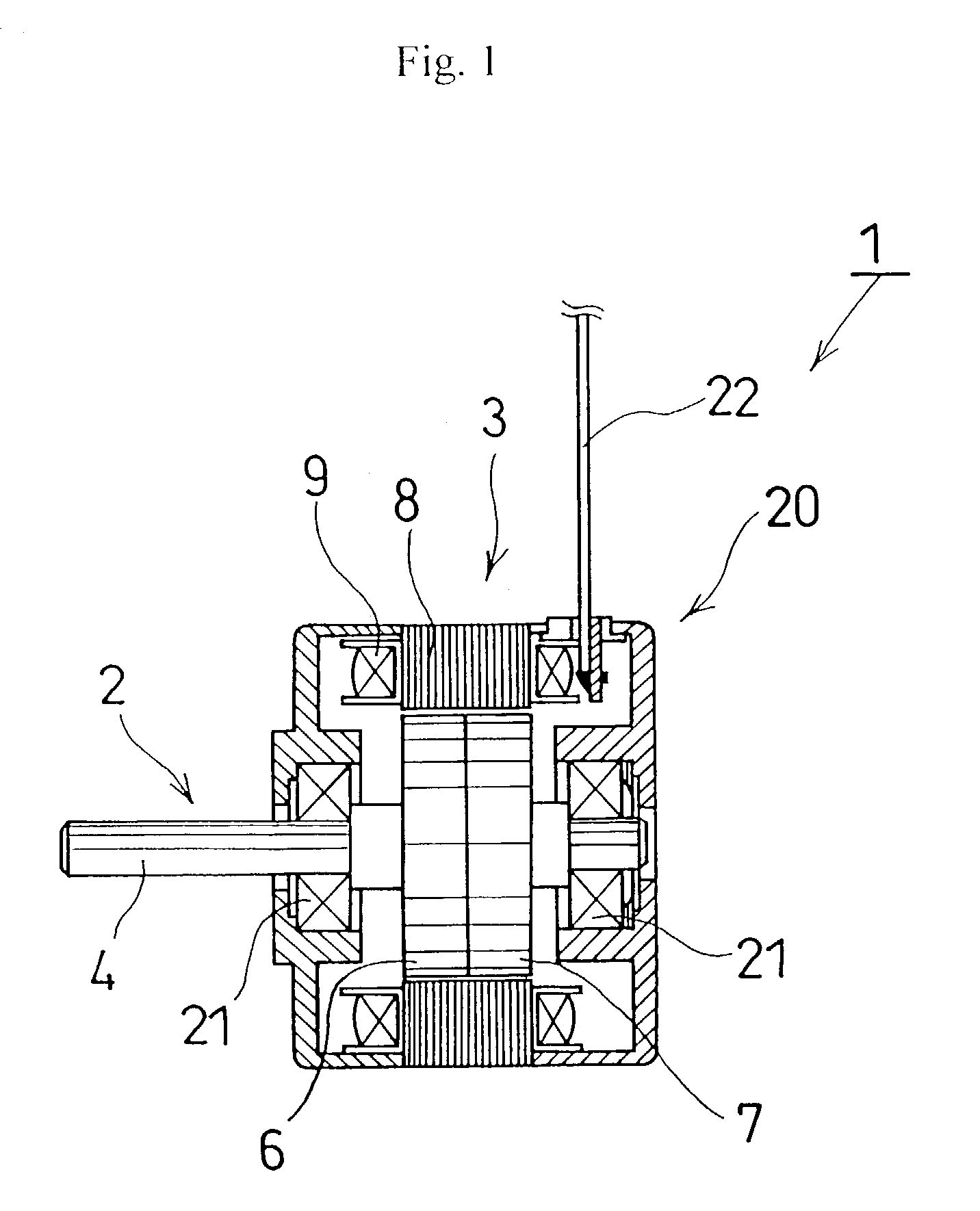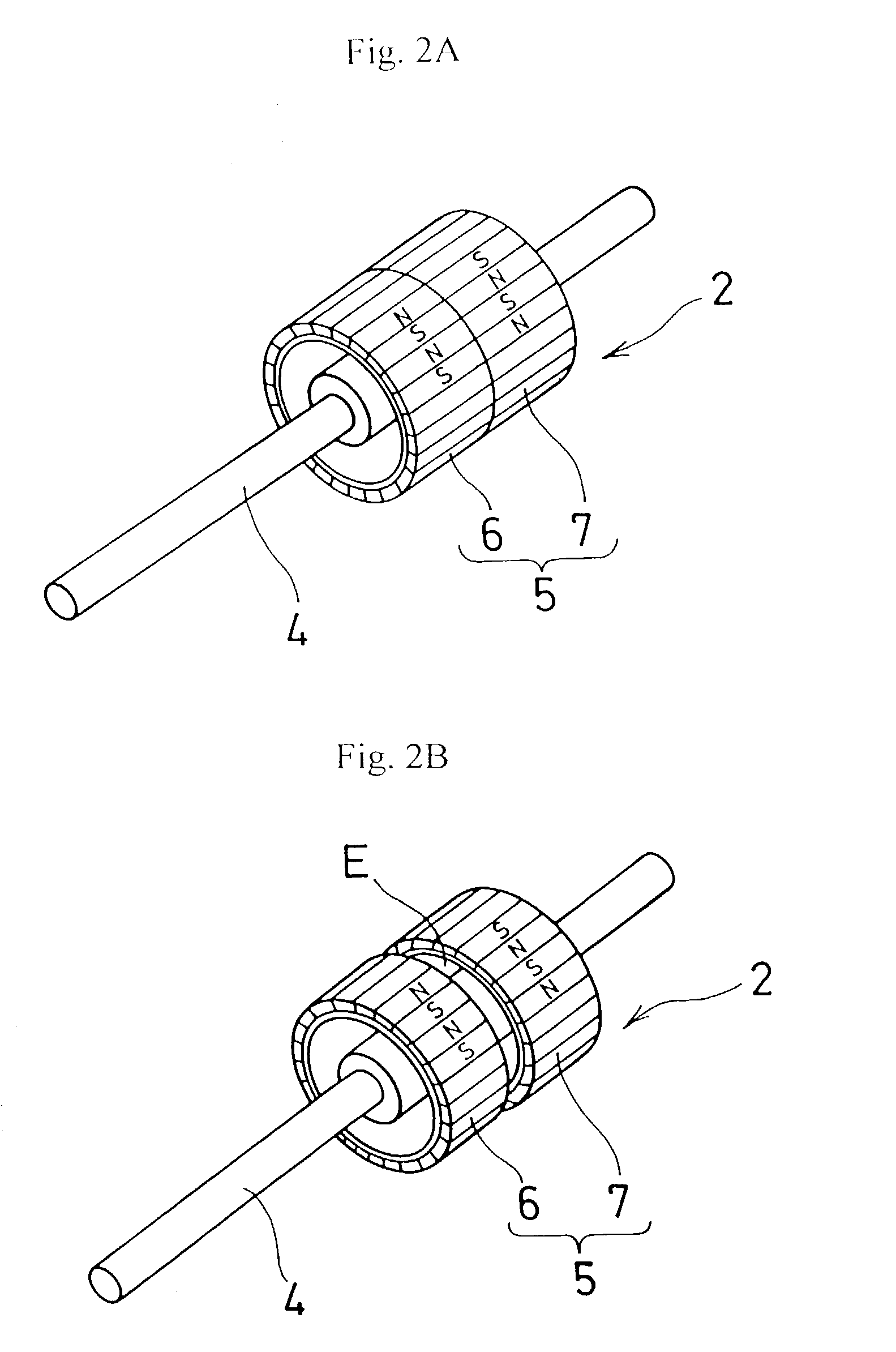Structure of rotors in stepping motors
a technology of stepping motors and rotors, which is applied in the direction of magnetic circuit rotating parts, magnetic circuit shapes/forms/construction, instruments, etc., can solve the problems of making undesired vibration and/or noise, and achieve the effect of reducing vibration and noise, and accelerating the speed of rotation
- Summary
- Abstract
- Description
- Claims
- Application Information
AI Technical Summary
Benefits of technology
Problems solved by technology
Method used
Image
Examples
first embodiment
[0033]Referring to FIGS. 1 to 3, the present invention is described as follows.
[0034]A stepping motor referred to as the first embodiment of the present invention has a stator 3 equipped in a housing 20, and enables a rotor 2 to rotate around a bearing 21 as shown in FIG. 1, and the rotor 2 comprises mainly a rotor axis 4 capable of rotating freely as being held by the bearing 21, and a magnetic component 5 that held by the rotor 4 by means of supporting portions (not shown) as shown in FIG. 2.
[0035]The magnetic component 5 comprises magnetic component portions 6 and 7 each shaped as an approximate ring. With regard to the magnetic component portions 6 and 7, it is possible that they are so fabricated that both of them are either combined firmly with each other in the axial direction as shown in FIG. 2A, or arranged separately at an appropriate vacant spacing inbetween in the axial direction as shown in FIG. 2B. For the convenience, hereinafter with regard to the magnetic component ...
second embodiment
[0040]Furthermore, the stator 3 can be comprised of first and second stator yoke components 14 and 15 capable of being incorporated in, respectively (see FIG. 4 concerning the present invention described herein later), and the first and second stator yoke components are so arranged that the two yoke components are displaced with angle of either 90° or 180° with each other.
[0041]The coils 9 are provided correspondingly for the first and second magnetic component portions 6 and 7, and capable of producing magnetic force (both attractive and repulsive) between the coil 9 and the first magnetic component portion 6, and also between the coil 9 and the second magnetic component portion 7. The first and second magnetic component portions 6 and 7 are so arranged that contrary poles oppose each other in terms of their physical structure.
[0042]The magnetic component 5 of the rotor 2 described beforehand in the first embodiment takes a ring formation so that the distribution curve of the magne...
third embodiment
[0051]In the third embodiment, the first and second magnetic component portions 6 and 7 have convex portions 6a and 7a, having a lengthy rectangular physique, formed in the axial direction at appropriate spacing being like an approximate gear on the circumferential surface of each portion as shown in FIGS. 7A and 7B. The convex portion 6a of the first magnetic component portion 6 and the convex portion 7a of the magnetic component portion 7 are magnetized in the radial direction, so that contrary poles face each other when viewed in the axial direction. In this embodiment, for example, the convex portion 6a of the first magnetic component portion 6 is magnetized as N-pole, and the convex portion 7a of the magnetic component portion 7 as S-pole.
[0052]The first and second magnetic component portions 6 and 7 are combined or disposed at a predetermined spacing E in the axial direction, and the convex portions 6a and 7a are arranged so that a convex portion opposes a concave portion. In ...
PUM
 Login to View More
Login to View More Abstract
Description
Claims
Application Information
 Login to View More
Login to View More - R&D
- Intellectual Property
- Life Sciences
- Materials
- Tech Scout
- Unparalleled Data Quality
- Higher Quality Content
- 60% Fewer Hallucinations
Browse by: Latest US Patents, China's latest patents, Technical Efficacy Thesaurus, Application Domain, Technology Topic, Popular Technical Reports.
© 2025 PatSnap. All rights reserved.Legal|Privacy policy|Modern Slavery Act Transparency Statement|Sitemap|About US| Contact US: help@patsnap.com



